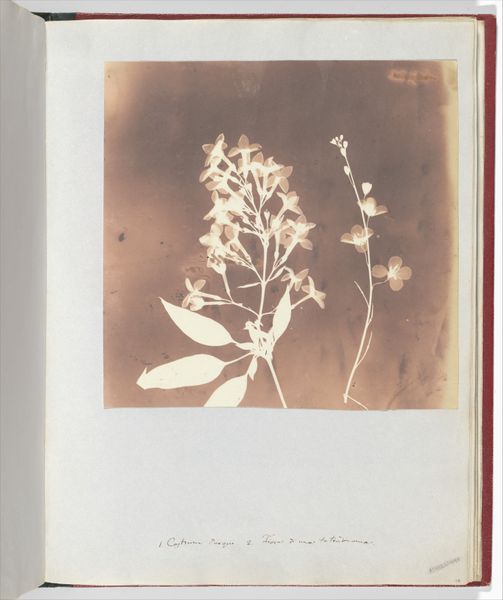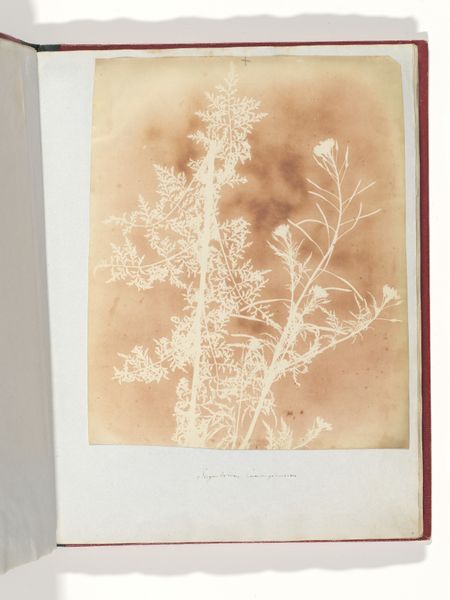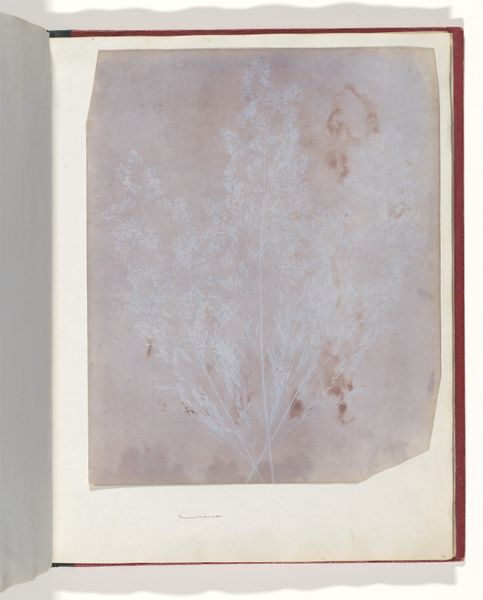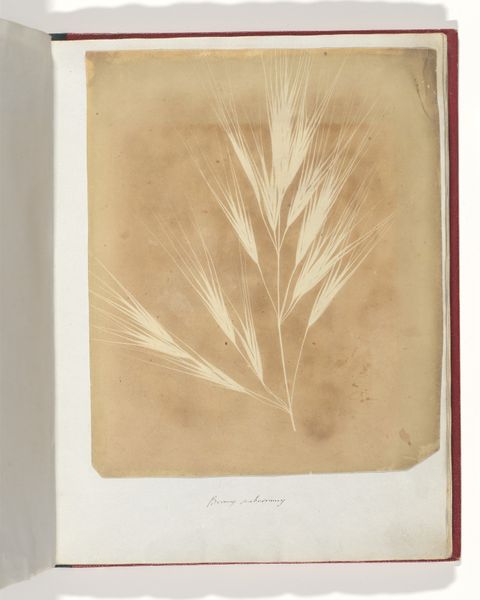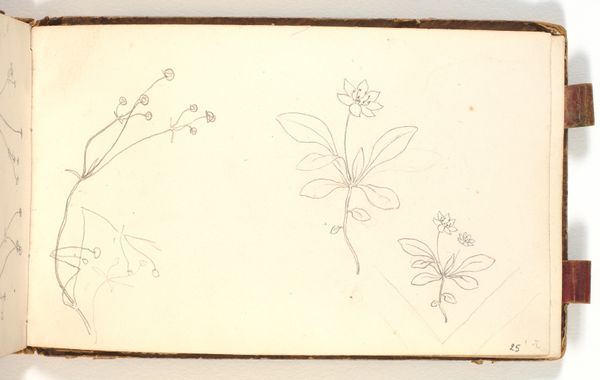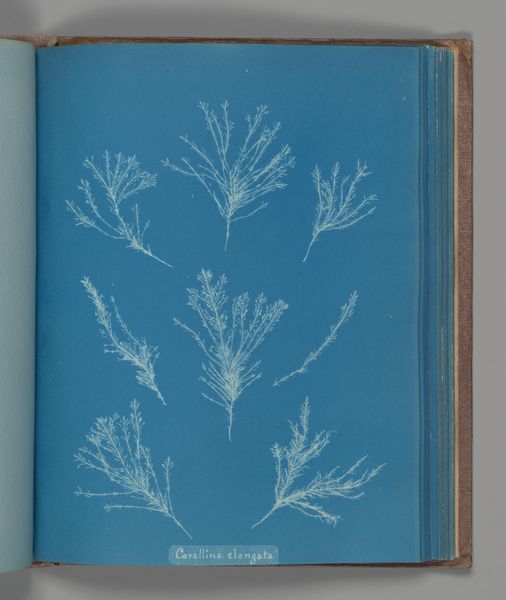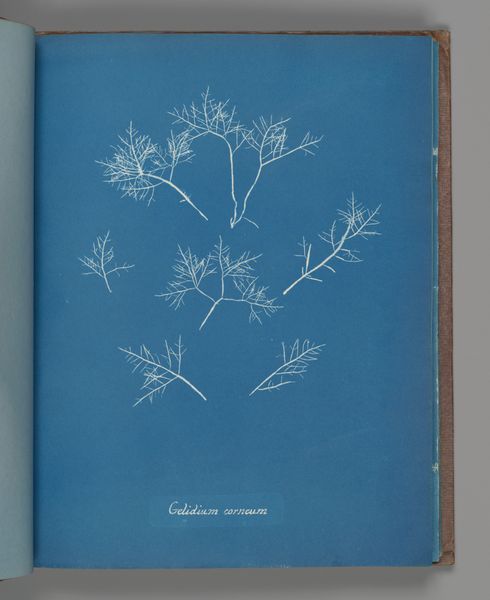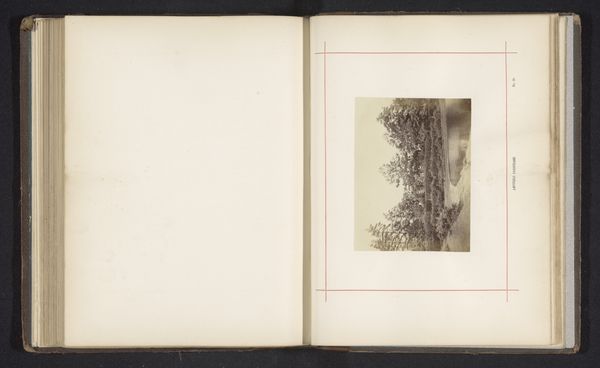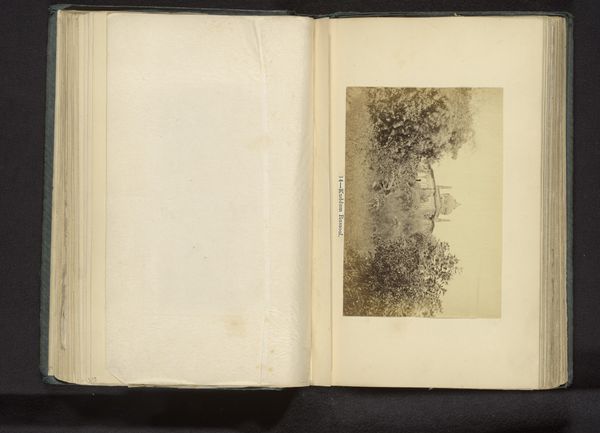
print, daguerreotype, cyanotype, photography
#
still-life-photography
# print
#
landscape
#
daguerreotype
#
cyanotype
#
photography
#
plant
#
sketchbook drawing
Dimensions: 20.9 x 16.8 cm (8 1/4 x 6 5/8 in.), irregularly trimmed
Copyright: Public Domain
Curator: Looking at this fascinating print from 1839, titled "1. Aglio. 2. Cestro. 3. Poa.," a work by William Henry Fox Talbot currently housed in the Metropolitan Museum of Art, I find myself struck by its quiet intimacy. Editor: The inverted tones give it a spectral quality. It is as though we are peering into a botanical x-ray, capturing the essence of each plant with a remarkable etherealness. Curator: Talbot, as a pioneer of photography, experimented tirelessly with capturing the natural world, didn’t he? Think about what this says about the era, an intersection of art, science and expanding classification. Editor: Precisely. If we consider his processes, the stark contrast between light and shadow feels deliberate. It creates an interplay of positive and negative space, accentuating the inherent structural geometry of these plants: their stems, leaves, and delicate blossoms. I can even identify patterns, textures… it's like reading a botanical code. Curator: And that botanical "code" had significance in its historical context. Talbot's images circulated amongst scientists, aristocrats, and other artists, expanding ideas of landscape and nature representation. How different is that from modern approaches that commodify similar subjects today? Editor: Indeed, a photograph like this transcends simple representation. The lack of colour compels us to look closer, to consider line, shape, and form in their purest state. How interesting to view early photography through such purely aesthetic lenses. It's as if the historical importance of its origin only enhances that beauty! Curator: Agreed, these ghostly specimens capture the nascent stages of a revolutionary medium. In examining this photographic "still life" by Talbot we reveal both a pivotal technological leap, and a historical record of how humans understand the visual world. Editor: Yes, what begins as a delicate study of light, texture and form transforms into a study of the gaze itself. Wonderful.
Comments
No comments
Be the first to comment and join the conversation on the ultimate creative platform.
